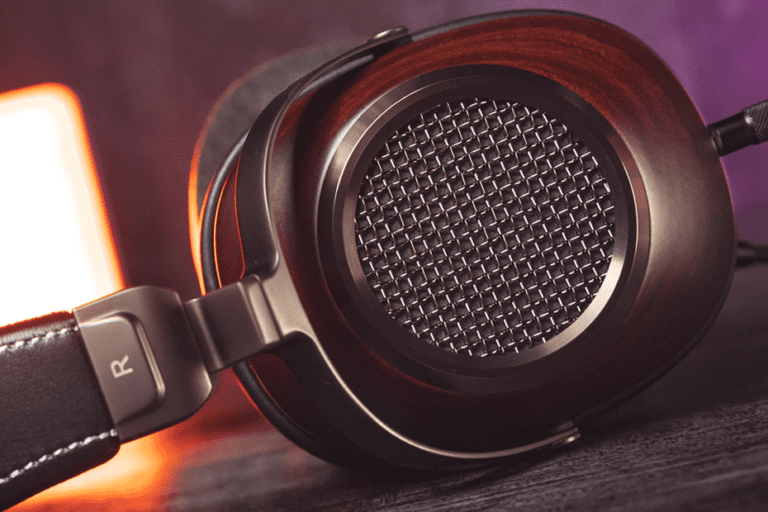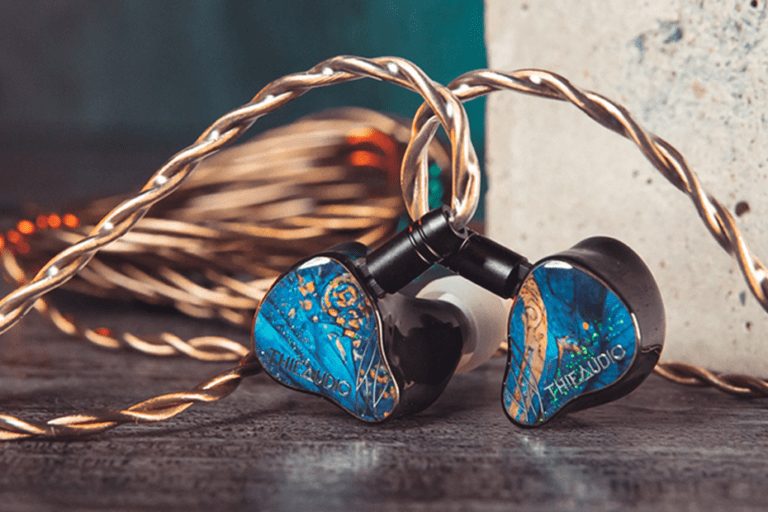This is my comprehensive review of the Kiwi Ears Quintet in-ear monitors. It’s a quite a unique IEM as it utilizes four different driver types. There are five drivers per channel. A DLC dynamic driver, two balanced armature drivers, a micro planar transducer, and a piezoelectric bone conductor.
Even though it has a bit complicated driver configuration, Kiwi Ears did an excellent job with tuning. Quintet is offering a balanced tonal signature with lots of detail, sonic realism, and a wide soundstage.
Disclaimer: I would like to thank Linsoul for providing a sample for this review. No one paid me to make this review. I don’t offer any specific opinions about this product. And all thoughts expressed in this review are solely my own.
The headphones come in a medium-sized carton box. On the front of the box, there is a branding and illustration of IEM and on the side of the box, there is a list of technical specifications.
In the box
- Kiwi Ears Quintet IEMs
- Detachable 0.78mm 2-pin cable
- 6 pairs of silicone ear tips
- Carrying case
- And a user manual
Impedance of Quintet is 32 Ohm, sensitivity 106dB.
Design & build
The Kiwi Ears Quintet’s appearance is a blend of style and practicality. The earpieces are made from medical-grade resin and have a comfortable shape. The faceplates of the earpieces are silver, with the Kiwi Ears logo etched on one side and the model name on the other. The faceplates have a matte finish and complement the overall looks, but the surface of the shells made of medical grade resin are fingerprint magnets.
There are two vent holes on top of the earpieces near the connector. In addition the earpieces don’t have any channel labels, so you can either navigate by remembering which face plate is which channel or looking at the cable connector base.
The nozzles here are also made from resin and are part of the shell. The nozzles are on the longer side. There is a metal mesh at the end of the nozzle and a small lip that helps with ear tip retainment.
Overall, the build quality, while it doesn’t keep with the price tag Is still good and the IEMs look minimalistic, which I liked a lot.
Fit & comfort
The IEM shells are made from medical-grade resin, they are polished and there are no sharp edges here. They are medium in size and have an ergonomic shape, and overall, the fit of this IEM is kind of deep.
I have big ears and personally for myself finding a good seal & fit with stock ear tips was quite easy, though not as easy as for example my pair of Blessing2, which fits me like a glove.
I’ve been using Quintet for extended periods of time, and they are light and comfortable, but the weight of IEM is not distributed evenly, so just make sure you are using the ear tips that provide you with a strong seal.
Cable
The cable that comes with this IEM is 1.2 meters long. It has a straight 3.5 mm connector on one end, and two 0.78mm 2-pin connectors on the other ends. The right connector’s base has a red marking to allow easy channel navigation.
The cable has a metal splitter, soft pre-molded ear hooks, and a metal chin slider. Overall, I would say this cable is quite ok, it’s soft and is low in microphonics, but still, it can’t keep up with the Quintet price tag.
Kiwi Ears Quintet sound overview
At 32 Ohms of impedance and 106 dB of sensitivity Quintet is easy to drive and I had no issues driving it from my Samsung Galaxy S10.
Please note that all sound impressions that I’m sharing on my channel are entirely subjective so please take them with a grain of salt.
The sound of Quintet is something that I have not heard before and this was one of many exciting things about this pair. I was a bit skeptical when I received it, as tuning four diverse types of drivers in a single shell is quite a hard job. But kudos to the Kiwi Ears team, the tuning is outstanding, and Quintet is a very coherent IEM.
5 drivers per side each serve their own purpose – the dynamic driver takes care of low frequency, two balanced armatures are reproducing midrange, the micro planar driver oversees the treble, and the PTZ driver oversees the upper treble, adding additional air to the presentation.
On my first listening, I had quite an ambiguous feeling. From my side, I was pleasantly surprised with the sheer resolution of this IEM and the realism of the sound presentation, but at the same time, my mind was boggling, trying to focus on details that were all over the place.
Surprisingly, half an hour later the overall sound became more coherent. I personally do not believe in burn-in, especially such a fast one, but I indeed believe that one’s brain and ears are getting used to the sound over time.
Bass
Bass is the first thing I need to mention when we talk about the sound, particularly bass speed, and control, both of which are impressive. The bass is also punchy and well-textured. Sub-bass extends well, but not near bass-head levels, while mid-bass has a good impact. In addition, there is no bass bleed into mid-range.
Midrange
Mid-range is clear and articulate, but not very forward. Vocals and instruments have a natural timbre, presentation, and texture which adds a lot of realism to the overall sound. The upper mid-range is more energetic than the lower mid-range, resulting in a lack of note weight with male vocals, while female vocals can sometimes be way too upfront for my personal liking.
Treble
The treble is probably one of the strongest points of this IEM. It’s well-extended and has a lot of sparkle, energy, and air. I was also a bit skeptical about Piezo drivers in this configuration as some implementation of Piezo drivers resulted in a typical Piezo zing. But fortunately, I rarely experienced such a thing with Quintet.
Treble, despite being so well extended and implemented, is not sibilant or harsh, but still, with some recordings it was borderline sibilant for me, so keep this in mind if you are a treble-sensitive person. Transients are good, details and micro details are excellent, and Quintet really shines in this area.
Soundstage, imaging, details
The soundstage width and depth are above average, and the IEM offers a moderate-sized sound stage. I both enjoyed Quintet with my music and gaming. The imaging is great, offering a good sense of distance, the resolution and instrument separation are also excellent, but not exemplary.
Still, Quintet is technically a very capable pair of IEMs with great resolution and excellent detail retrieval, and in addition, it responds well to EQ too.
Conclusions
Despite using a not-very-typical driver configuration, Kiwi Ears did a great job with Quintet. The sound coherency is surprisingly good, the individual drivers do their job well resulting in a well-blended combination of sound.
Pros
- Excellent fit and comfort
- Balanced U-shaped sound signature
- Excellent coherency
- Fast and well-controlled bass
- Sparkly and airy treble with a good extension
- Decent detail retrieval and good technicalities for the price
- And the IEM is easy to drive
Cons
- Sub bass amount can be a deal breaker for some people, though this can be easily fixed with EQ
- Treble can be a little bit hot if you are a treble-sensitive listener and it can have a metallic timbre on rare occasions
- With some recordings, the IEM is lack dynamics
- And the supplied case could have been a bit deeper for more comfortable storage
In my opinion, Kiwi Ears Quintet is a solid performer that punches above its weight. It has a balanced U-Shaped sound signature, coherent tuning, lively and engaging tonality, good and fast bass, sparkly treble, and excellent technical abilities for its price.
I can absolutely recommend Quintet to those looking for fun and engaging sound signature IEMs with a good resolution and lots of detail in this price bracket.
I hope this review has been helpful! You can check out more reviews right here. Thanks for reading and happy listening!
If you enjoy video reviews more than written ones, why not subscribe to my YouTube channel for future updates?
** As an Amazon Associate I earn from qualifying purchases. Some of the links in my reviews are affiliate links, which means at no extra cost to you, I will make a small commission if you click them and make a qualifying purchase.


